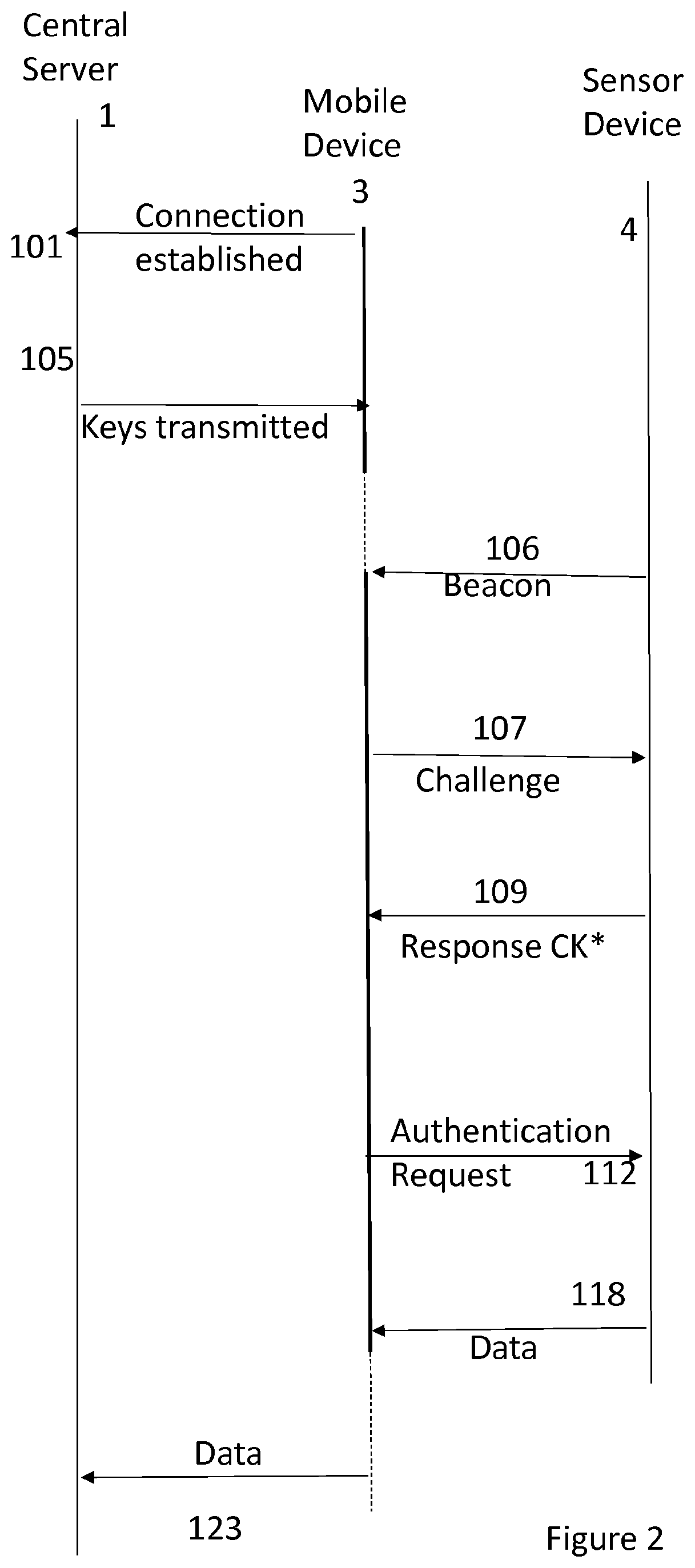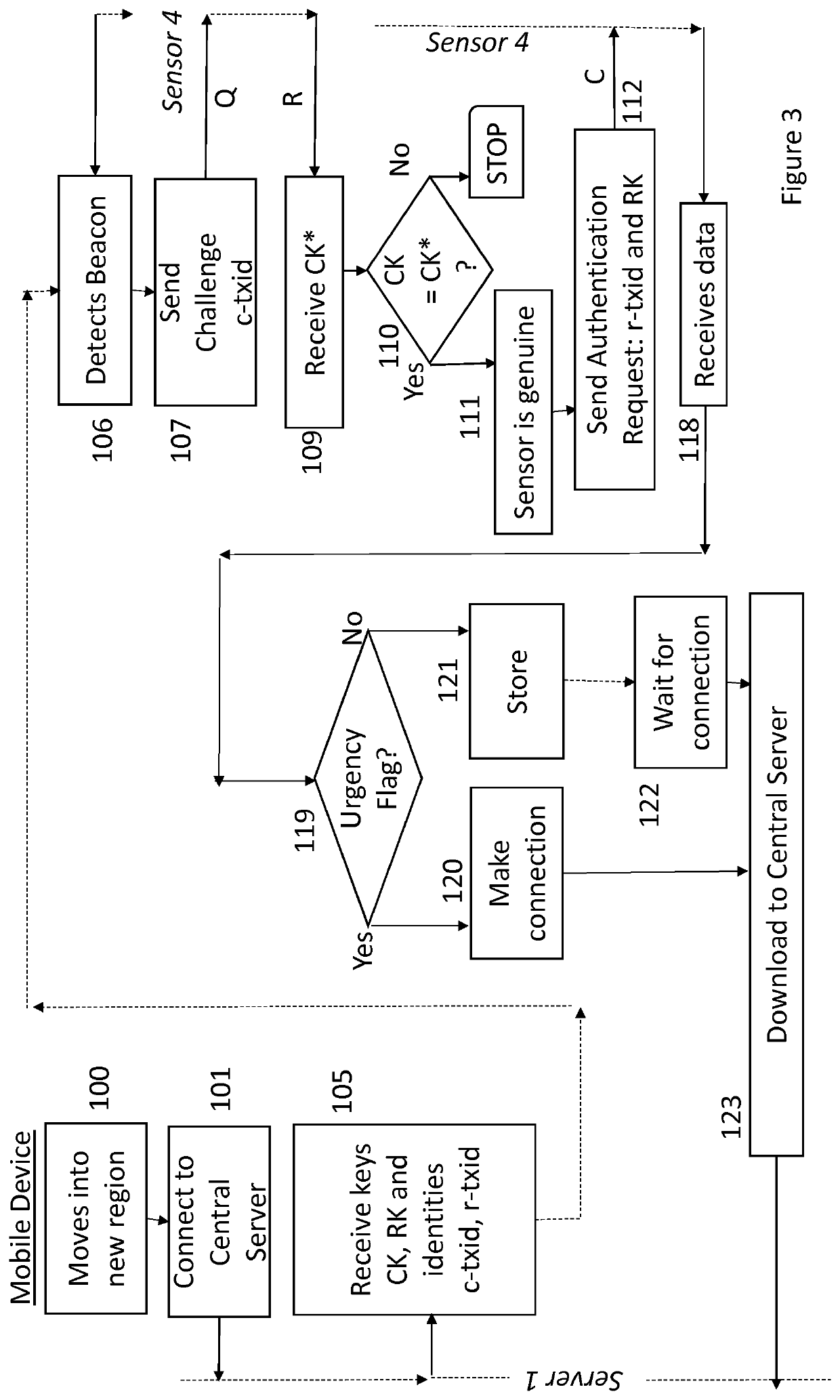Authentication of data transmission devices
- Summary
- Abstract
- Description
- Claims
- Application Information
AI Technical Summary
Benefits of technology
Problems solved by technology
Method used
Image
Examples
Embodiment Construction
[0035]As depicted in FIG. 1, a number of local terminals 4, 41, 42, 43, 44 are distributed through a region 5. The functional elements of one such terminal 4 are depicted in FIG. 8. These terminals are provided to collect data relating to their environment through sensing apparatus 81, to be stored locally (store 82) and later delivered by a processing system 83 to a server 1 by way of an intermediate device 3 and a communications network 6. A flag function 800 may be used to provide labelling of the data to facilitate handling by the intermediate mobile device 3. Only elements relevant to the understanding of the operation of the embodiment are depicted, but it will be understood that functions such as power management would also be required.
[0036]Referring to FIG. 8 in more detail, each terminal is provided with a low-powered radio transceiver 80 which allows it to communicate with devices nearby, but is not powerful enough to communicate directly with the nearest wireless network...
PUM
 Login to View More
Login to View More Abstract
Description
Claims
Application Information
 Login to View More
Login to View More - R&D
- Intellectual Property
- Life Sciences
- Materials
- Tech Scout
- Unparalleled Data Quality
- Higher Quality Content
- 60% Fewer Hallucinations
Browse by: Latest US Patents, China's latest patents, Technical Efficacy Thesaurus, Application Domain, Technology Topic, Popular Technical Reports.
© 2025 PatSnap. All rights reserved.Legal|Privacy policy|Modern Slavery Act Transparency Statement|Sitemap|About US| Contact US: help@patsnap.com



